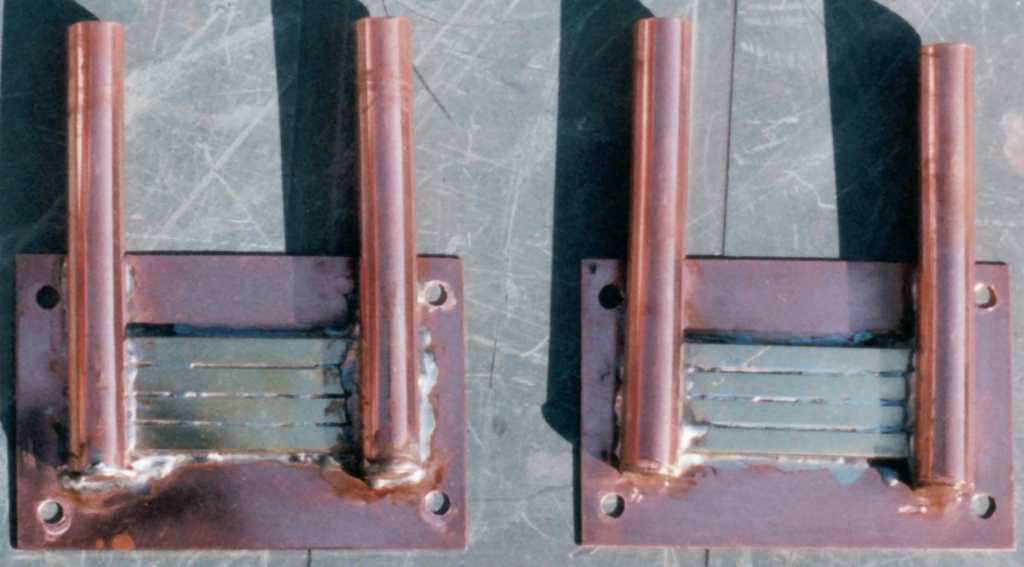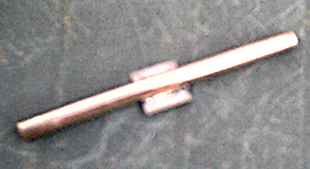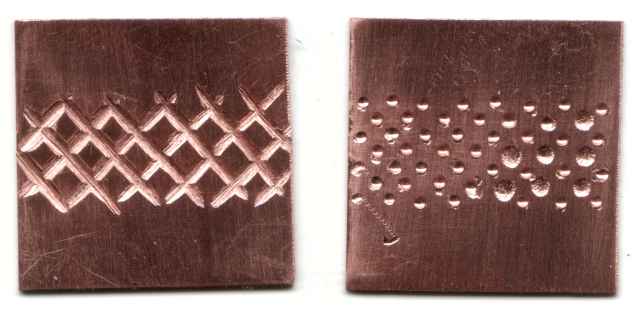Turbulence in Waterblocks
Turbulent flow is better for heat transfer because it mixes up the boundary layer. If you don't know what a boundary layer is, just search the web for it and you should find plenty of information which would take to long to explain here.
Part 1: Grooves vs. Smooth
There are many ways of inducing turbulence, but for this experiment I have chosen to use shallow grooves at an angle to the water flow. Other possibilities include dimples (like a golf ball) or a sudden increase in pipe diameter. I have no knowledge of what size or how deep to make the grooves, so I chose what was easiest to make.
I used two waterblocks for this experiment: The first is the prototype waterblock design; The second is identical to that one, except for the grooves in the base plate, shown below.



I made the grooves using a small cutting disk. They are about half a millimetre deep, and one millimetre in width. Apart from these grooves, the base is very smooth, having been polished with 1000 grit wet-and-dry paper.
I performed the tests using my new test rig. I tested each waterblock several times, to try to eliminate errors.
| Without grooves: | 0.37oCW-1 |
|---|---|
| With grooves: | 0.34oCW-1 |
This seems quite conclusive to me: Increasing turbulence has a measurable effect on my waterblock's cooling ability (almost 10%), and I will definitely be incorporating turbulence-inducing structures into future waterblocks. I would like to do another experiment using dimples to induce turbulence, but that will have to wait for another day...
Part 2: Grooves vs. Dimples
To avoid spending inordinate amounts of time and money on the numerous tests I want to do, I have devised an extremely simple waterblock that is both cheap and quick to build. Simplicity should also reduce any differences in performance due to slight differences in manufacture.


The new waterblocks consist of a single length of pipe with a section removed from the middle. A flat plate is soldered over the gap. This plate is what contacts the heat source and is covered in whatever pattern I choose to test, which in this case is grooves and dimples.
Note that these are not designed to actually fit on a CPU, which is why I haven't bent the pipes up, they are for experimental purposes only.

The grooves, as before, were made using a small cutting disk. The dimples were made using a small spherical engraving bit (I don't know if they have a proper name). Some of the dimples are slightly larger because my hand slipped :-)
It took me a mere half an hour to make both of these waterblocks, and they each cost less than 50p in materials, compared to about one hour to make one of the multi-channelled waterblocks from the first experiment, each of which costs approximately £1.50. This means I can churn out as many of these things as I like (until I get fed up).
The results from these waterblocks are intriguing:
| Grooves: | 0.39oCW-1 |
|---|---|
| Dimples: | 0.59oCW-1 |
The performance of the grooved waterblock is pleasingly good, considering that I designed it to be easy to build, not for performance. The dimpled waterblock on the other hand, shows very poor performance. The grooves are 51% better than the dimples, which is far more difference than the multi-channelled waterblocks displayed. I would theorize that the bigger difference is due to the smaller base plate. It may also be that the grooves improve cooling not only by increasing turbulence, but also because they increase the surface area. I might try larger dimples next, as I feel sure that they should work better than this. I think I should also make one of these waterblocks with a smooth base plate, just to compare with, so that I can see if dimples are better than nothing at all.